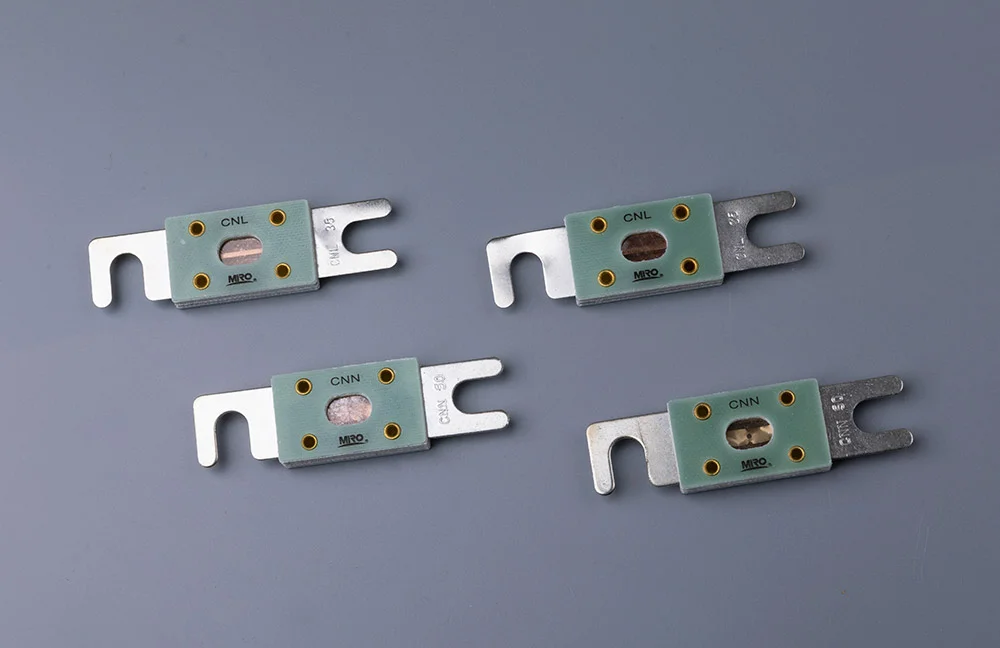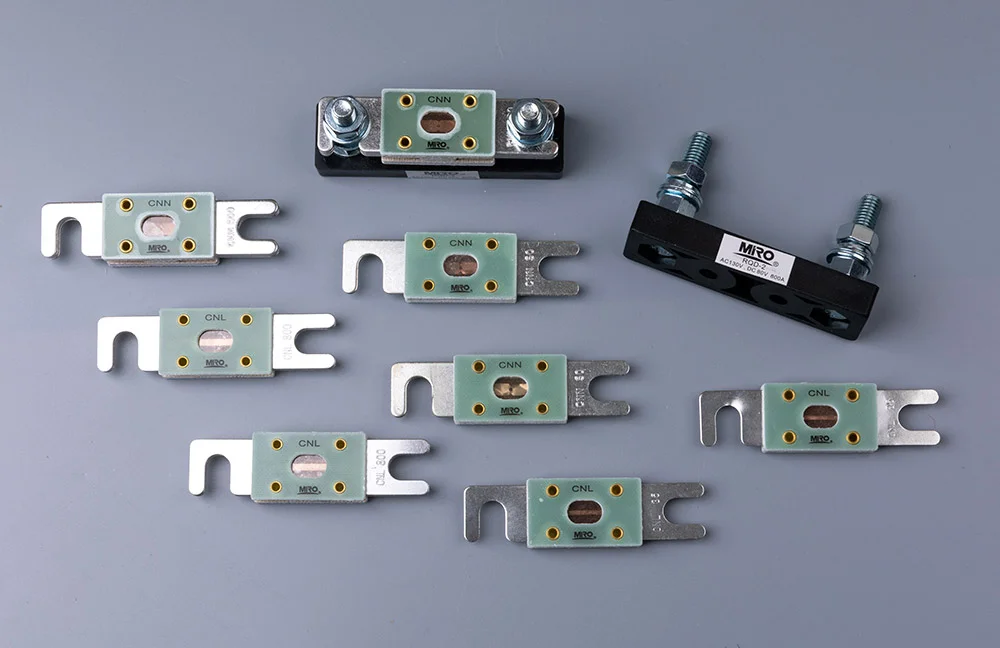- This topic is empty.
-
AuthorPosts
-
<span style="font-size: 16px;">Automobile Fuse: Your Complete Guide to Understanding, Choosing, and Maintaining</span> Automobile Fuse: Your Complete Guide to Understanding, Choosing, and Maintaining
Understanding the importance of an automobile fuse is crucial. These small components play a significant role in protecting your car from electrical overloads and short circuits. By preventing damage to sensitive electronics and wiring, fuses ensure the safe operation of your vehicle.
Understanding Automotive Fuses
Function of Automobile Fuse
Automotive fuses, like automobile fuses, play a critical role in safeguarding your vehicle's electrical circuits. When there is an excess of current flowing through the circuit, the fuse acts as a barrier by breaking the connection. This helps prevent any harm to delicate electronic components within your vehicle.
Fuses are designed to be sacrificial components that sacrifice themselves when needed to protect other parts of the electrical system. By interrupting the flow of excessive current, automobile fuses shield crucial systems like air conditioning, lights, and audio equipment from potential damage caused by power surges or short circuits.
-
Protects electrical circuits
-
Prevents damage to sensitive electronic systems
Importance of Knowing How They Work
Understanding how automotive fuses operate is vital for ensuring that your vehicle remains in top condition. Without this knowledge, you may struggle to diagnose and fix electrical issues efficiently. Familiarizing yourself with different types and ratings of fuses will empower you to troubleshoot problems effectively and keep your car running smoothly.
-
Facilitates efficient troubleshooting
-
Helps maintain electrical integrity
Purpose and Function of Automotive Fuses
Protection Against Overloading
Automotive fuses, like automobile fuses, are crucial for safeguarding your vehicle's electrical systems. When there is an overload or a short circuit in a circuit, the fuse plays a vital role. It acts as a protective barrier that shields your car's electronics from damage by breaking the circuit if an overload occurs. This action prevents excessive current flow that could potentially harm other components.
-
Protects electrical systems from overloading or short circuits
-
Prevents further damage to more expensive electrical components
Sacrificial Components
Automotive fuses essentially act as sacrificial lambs within your vehicle's electrical setup. They sacrifice themselves when necessary to ensure the safety and functionality of other critical electronic parts in your car. By blowing out under extreme conditions, they interrupt the current flow and prevent potential fires or irreparable harm to costly components such as the engine control unit (ECU) or airbag system.

Types of Automotive Fuses
Blade Fuses
Blade fuses are the most common type found in modern vehicles. They have a plastic body with two prongs that fit into sockets, coming in various sizes denoted by different colors. Blade fuses are easy to replace and provide protection against overcurrent situations.
Blade Fuses:
-
Common in modern vehicles
-
Easy to replace due to their design
Glass Tube Fuses
Glass tube fuses consist of a glass tube housing a filament or metal wire that melts when there is an electrical overload. These fuses are often used in older models and offer visibility of whether they have blown, aiding quick identification.
Glass Tube Fuses:
-
Found in older vehicle models
-
Provide visual indication when blown
Ceramic Fuses
Ceramic fuses contain a ceramic body with metal end caps and come in various current ratings for different applications. They are known for their durability and ability to withstand high temperatures, making them suitable for specific automotive systems.
Blade Fuses in Vehicles
Plastic Body and Metal Prongs
Blade fuses, the most common type of automotive fuse today, have a plastic body. They contain two metal prongs that fit into a fuse box or holder in your vehicle. These fuses are designed for easy installation and removal.
Blade fuses vary in size and color, indicating their amperage rating. The different sizes help accommodate various electrical systems in automobiles. For instance, a larger blade fuse would be used for circuits with higher amperes to ensure safety.
Amperage Rating Indicators
When dealing with blade fuses, it's crucial to pay attention to the color coding as it signifies the amperage rating of each fuse. For example:
-
A 10-ampere blade fuse might be red.
-
A 20-ampere one could be yellow.
-
And a 30-ampere fuse may come in green.
Understanding these color codes is vital when replacing or checking your automobile fuses since using the correct amperage-rated fuse helps protect your vehicle's electrical system from damage.

Glass Tube and Ceramic Fuses
Glass Tube Fuses
Glass tube fuses are older-style fuses that have a thin wire inside a glass tube. They are filled with sand or gas to prevent the wire from overheating. These fuses protect electrical circuits in vehicles by breaking the circuit if there is an overload.
Glass tube fuses can be found in older cars, motorcycles, and even some household appliances. They are known for their ability to handle high currents without failing easily. However, they may not be as reliable as modern blade fuses due to their construction.
-
Glass tube fuses contain a thin wire.
-
These types of fuses protect electrical circuits.
-
Found in older vehicles and appliances.
Ceramic Fuses
Ceramic fuses are similar to glass tube fuses but have a ceramic body instead of glass. They offer better protection against overloads than glass tube ones because ceramics can withstand higher temperatures before melting.
These types of automobile fuse play crucial roles in protecting sensitive electronic devices and systems within your vehicle. Their durability makes them suitable for specialized applications where high temperatures or vibrations could affect other types of fuse materials.
-
Ceramic fusers use ceramic bodies.
-
Offer better protection against overloads.
-
Suitable for specialized applications.
Selecting the Correct Fuse for Your Vehicle
Amperage Rating
When choosing an automobile fuse, make sure it has the right amperage rating to match your vehicle's electrical needs. Using a fuse with too high or too low of a current capacity can be dangerous. Refer to your car's manual or consult an expert if you're unsure.
It is crucial to ensure that the fuse you select matches the specific requirements of your vehicle's electrical system. Failing to do so can result in various issues, including electrical malfunctions and potential fire hazards. Always prioritize safety by double-checking the amperage rating before installing a new fuse.
Consultation and Expertise
If you're uncertain about which fuse to choose, seek guidance from professionals who have experience with automotive wiring and electrical systems. They can provide valuable insights into selecting the right fuse based on your vehicle's requirements. Remember, it's better to ask for help than risk damaging your car due to an incorrect fuse choice.
Consequences of Using Incorrect Fuses
Overloading Circuits
Using an incorrect fuse with a higher amperage can lead to severe consequences. When the amperage rating is too high, it overloads the circuit in your vehicle. This overload can damage various electrical components in your car, leading to costly repairs.
When you use a fuse with a lower amperage rating than required, it poses another set of problems. The fuse may blow frequently due to the excess current passing through it. As a result, you might experience intermittent electrical issues while driving your vehicle.
To avoid these detrimental effects on your automobile's electrical system and ensure safety, always make sure that you are using the correct fuses for each component in your vehicle. By doing so, you protect both yourself and your car from potential hazards associated with using incorrect fuses.
Maintaining and Replacing Vehicle Fuses
Inspecting Regularly
Inspect automobile fuses regularly to catch any faulty ones. Testing them ensures they're working correctly.
When you find a blown fuse, it's crucial to replace it promptly. Use a new one with the same amperage rating.
AuthorPostsViewing 1 post (of 1 total)